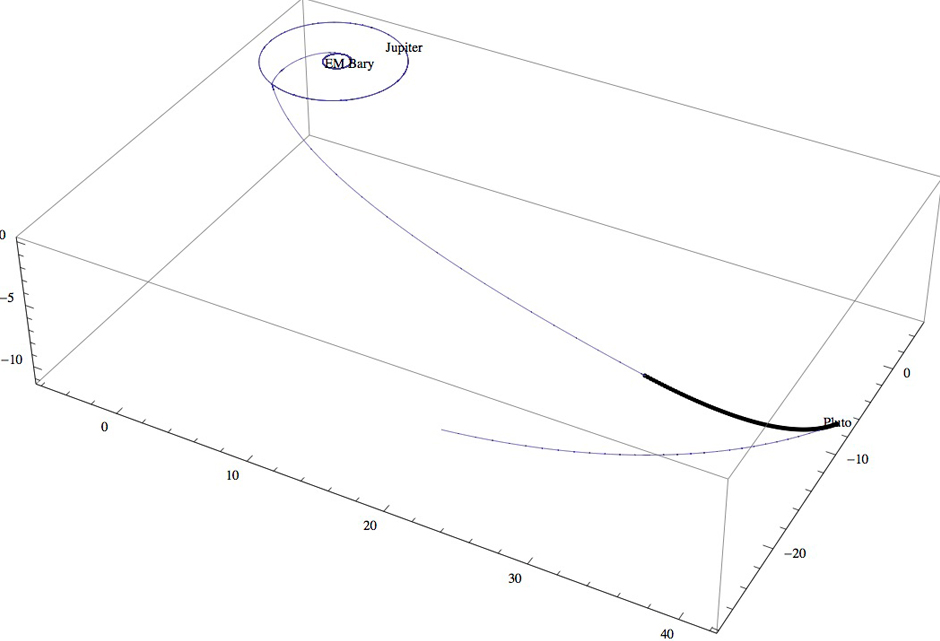Background
NASA plans and ranks future planetary mission priorities through the Decadal Survey process. Because NASA is a risk-averse organization, no viable route to high Decadal Survey mission priority can occur except via well-studied mission concepts. During 2019-2020, NASA is funding a series of exploratory mission studies in advance of the next planetary Decadal Survey.
To capitalize on our strong position in the field of Pluto-Kuiper Belt missions in the next Planetary Decadal Survey and the mission studies leading to it, in 2017 we proposed to develop tools for and then explore a wide range of potential Pluto Kuiper Belt Missions.
Approach
The technical approach of this project was to complete the following tasks:
Build a software tool to identify, evaluate, and optimize trajectories between many solar system targets for ballistic propulsion methods. A significant objective for this tool was to feature a simple user interface to enter options and constraints, show results, and provide a quick look at launch windows and available payload masses for trajectory possibilities using different launch vehicles.
Employ this tool and other commercial mission design tools to examine approximately 100 future flyby and orbiter mission opportunities to about 10 other Kuiper Belt dwarf planets, including Pluto, and then develop spacecraft mission requirements, scientific objectives, payload complements, and estimated costs for each.
Perform a mission feasibility assessment, including spacecraft mission requirements, scientific objectives, payload composition, and estimated costs for the “Gold Standard” Pluto orbiter mission which, after orbiting Pluto, escapes the system and uses electric propulsion to explore other Kuiper Belt dwarf planets and smaller Kuiper Belt objects (KBOs).

Figure 1: Earth-Jupiter-Pluto rendezvous trajectory; dimensions are in astronomical units. Low-thrust arc in black dots, with one dot every 50 days. The Pluto orbit arc shows the same duration as transfer trajectory from Jupiter to Pluto.
Accomplishments
All tasks proposed for this project were accomplished on budget and without any budget increases, though we did request and receive no-cost schedule extensions required by the press of client-funded project work.
